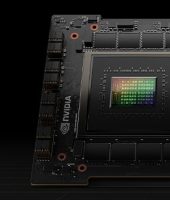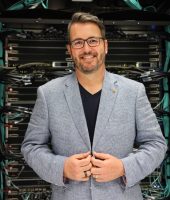Perth, Western Australia – The Pawsey Supercomputing Research Centre kicked off a three-day hackathon, on September 18, marking the beginning of its third Pawsey Centre for Extreme Scale Readiness (PaCER) conference week. The event was hosted in Perth and drew over 60 participants, including Australian researchers and industry speakers from around the world, both in-person and online.
The hackathon was a key component of the PaCER event. At our recent hackathon, participants achieved significant milestones in various projects.
One of the teams, Metagenomics Australia led by Prof Robert Edwards, developed innovative strategies to seamlessly stream data from our warm storage Acacia directly to software operating on Setonix, enhancing data processing efficiency.
The GTx HiPSTAR project led by Prof Richard Sandberg, reported a remarkable 25x speedup achieved on Setonix GPUs. The HiPSTAR team working on Direct Numerical Simulations (DNS) of gas turbine blades, achieved another 25% performance improvement during the hackathon allowing their code to meet significant energy efficiency goals with more than 6x improvement over classical non-GPU approaches.
In the EXESS project led by Dr Giuseppe Barca, great scalability results on ORNL’s Frontier and Pawsey’s Setonix systems were presented with more than 85% of parallel efficiency on thousands of GPUs. During the hackathon, the EXESS team further investigated AMD ROCm features and achieved detailed profiling results with the use of AMD Omnitrace tool.
In the BLINK project, substantial advancements were made, with three out of five processing steps successfully ported onto GPUs. This achievement marks a significant step toward enabling in-memory processing for Fast Radio Burst (FRB) searches on Murchison Widefield Array (MWA) and Square Kilometre Array (SKA) data.
These are some of the successes and moments that underscore the collaborative and innovative mindset of our hackathon participants, driving forward the possibilities of computational research and development. Enabling such breakthroughs were a dedicated group of HPC experts and hackathon mentors, including Fredrik Robersten (LUMI Supercomputer), George Markomanolis (AMD), Joseph Schoonover (Fluid Numerics), Toby Potter (Pelagos), and Pawsey’s Supercomputing Application Specialists.
Computer codes optimised during PaCER event are currently being utilised in the largest allocations of the National Computational Merit Allocation Scheme (NCMAS) as well as within international schemes and projects like DOE’s INCITE and Exascale Computing Project (ECP). This joint effort represents a significant impact and enables new scales of research by significantly improving the performance and energy efficiency of computational workflows.
PaCER is a collaborative effort involving more than 60 scientists from over 18 international institutions. These dedicated teams are focused on 10 ambitious projects under the PaCER umbrella, all aiming to achieve extraordinary performance on next-generation supercomputers through the development of exascale-ready applications and workflows.
With a substantial $3 million investment, these projects are dedicated to optimising code for the HPC Cray EX Setonix Supercomputer, Australia’s most powerful supercomputer and the world’s fourth most energy-efficient. Over the past 3 years, Pawsey has been working closely with PaCER teams on software development and optimisation to ensure their success.
Mark Stickells, Pawsey’s Executive Director, opened the conference and celebrated the researchers’ successes during the hackathon. Mentors along with Erik Draeger and Jane Herriman from Lawrence Livermore National Laboratory, were among the conference speakers.
Erik Draeger, Director of the High Performance Computing Innovation Center at Lawrence Livermore National Laboratory (LLNL), together with LLNL’s Jane Herriman delved into the capabilities of the ‘El Capitan’ Supercomputer and the multi-step journey designed to migrate LLNL users to El Capitan. El Capitan is expected to deliver over 2 exaflops of power run mostly from APUs. Developed by Hewlett Packard Enterprise (HPE) for the Department of Energy’s National Nuclear Security Administration (NNSA) in the US, this system promises to become the world’s most powerful supercomputer upon completion.
During their session, Erik and Jane emphasized the importance of adapting CPU-based applications to run efficiently on El Capitan’s new architecture, and the challenges of making this in a sustainable and efficient way.
All the projects also shared their current status and achievements with the audience, showcasing significant improvements in performance but most importantly in energy-efficiency of their codes, some of which are already being run on Frontier, Oak Rydge National Lab Exascale Supercomputer in the US.
The PaCER program has been nominated for the 2023 HPCWire Readers and Editor’s Awards for Best Collaboration, exemplifying the collaboration between Pawsey, international partners, and industry stakeholders.
Check our YouTube channel, the P’Con23 playlist will showcase some of the PaCER projects: PCon23 Playlist

Researchers, international and national mentors and Pawsey experts gathered for a five-day event to accelerate scientific computing in Setonix

PCon panel discussion included Fredrik Robersten (LUMI Supercomputer),, Joseph Schoonover (Fluid Numerics), Toby Potter (Pelagos) and Sarah Beecroft (Pawsey)

Teams started hacking their way to Setonix GPUs with great results

